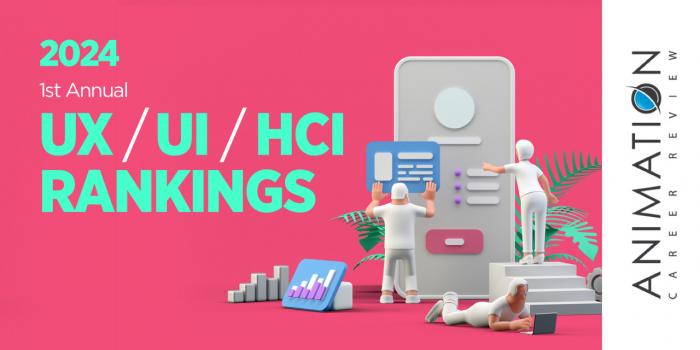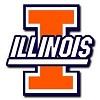
Learn the cutting-edge skills to design engaging user experiences with an online Bachelor of Arts (BA) in Graphic Design with a concentration in User Experience Design at Southern New Hampshire University. Apply today!

| Ranking | School | State |
|---|---|---|
| 1 | University of Michigan | Michigan |
| 2 | Purdue University | Indiana |
| 3 | DePaul University | Illinois |
| 4 | University of Illinois Urbana-Champaign | Illinois |
| 5 | Michigan State University | Michigan |
Our 2024 rankings of the Top 5 undergraduate UX/UI/HCI school programs in the Midwest. For an explanation of ranking criteria, click here.

The School of Information at University of Michigan (U-M) serves approximately 1,800 students enrolled in five degree programs. Known as UMSI, the School of Information was the first iSchool in the world to offer the integrated BS in Information (BSI). This program is also one of the few to provide a UX concentration with the option to focus in areas such as Digital Humanities, Social Media, and Entrepreneurship.
Consisting of 120 credits, the BSI UX concentration features courses that guide students idea and design to building and evaluating interactive systems. Courses include Building Interactive Applications;
Putting the H in HCI: Human Perception, Cognition, and Mental Processes; Needs Assessment and Usability Evaluation; User Experience Design Capstone I; and Interaction Design Studio.
Other program features include the dual degree options in collaboration with the Penny W. Stamps School of Art and Design, the College of Literature, Science, and the Arts, the School of Music, Theatre & Dance, the College of Engineering, and the Ross School of Business; the opportunity to add a minor offered by any department; study abroad in places such as England, Australia, or Spain; and participation in the internship program (optional).
The BSI UX program at University of Michigan culminates with the User Experience Final Project Students. During this course, students will create a project that demonstrates knowledge and skills related to the analysis, design, and evaluation of interactive systems based on client needs. The User Experience Final Project might include constructing a website for an academic unit or organization; designing a patient-facing or clinical support system; building a mobile health application; or constructing a commercially viable product, among others.
With an average starting salary of $88,000, approximately 97% of BSI graduates work in their field of choice. Program alumni have been hired at places such as Amazon, Meta, KPMG, Deloitte, NBCUniversal, Johnson & Johnson, Samsung, Ford, Procter & Gamble, IBM, Yahoo, Nike, Bain & Company, J. Crew, Ernst & Young, BetMGM, Publicis Sapient, Uline, Epic Systems, PNC, Visa, L’Oreal, PepsiCo, TechSmith, Accenture, and Slalom.
Job titles include UX Designer, User Centered Design Analyst, Interaction Designer, UX Associate Consultant, UI Designer, UI Developer, Associate UX Designer, UX Researcher, UX/UI Software Engineer, Lead Product Designer, and Innovation Development Analyst, and Junior Associate Experience Designer, among others.
University of Michigan is one of the first public universities in the nation. Established in 1817 in Detroit, Michigan, the school serves 52,065 students, making it the largest school in the state for the third consecutive year. U-M provides more than 275 degree programs across 19 colleges and schools. University of Michigan is accredited by The Higher Learning Commission (HLC).

Purdue University is home to Purdue Polytechnic Institute—a technology college that provides more than 30 BS programs that focus on innovation, hands-on learning, and interdisciplinary study. One of the 10 colleges of Purdue University, Purdue Polytechnic has six academic departments from Aviation and Transportation Technology to Computer Graphics Technology.
Within the Institute’s Department of Computer Graphics Technology (CGT) Department is a CGT program with five career-ready undergraduate majors. This includes the UX Design.
Courses for this BS program are taught in two types of studios: Learning and Experience. Areas explored in the Learning Studios include user research, creating and assessing prototypes, and solving problems. Course examples include Fundamentals of Imaging Technology; Introduction to Data Visualization; Contemporary Problems In Applied Computer Graphics; Internet Foundations Technologies and Development; and Computer Graphics Professional Practices.
In the Experience Studios, students will apply the skills acquired in the Learning Studios to a variety of projects for industry clients. Examples include visual interfaces, websites, kiosks, mobile apps, desktop applications, educational tools, vehicle dashboards, productivity applications, and smartwatches. Upon completion of the program, students will have 3.5 years of solid experience working on real projects for real clients.
Graduates of the CGT UX Design BS program at Purdue University are prepared to seek careers in all industries that utilize UX. Sample job titles include User Experience Engineer, Front-end Developer, User Researcher, and User Interface Designer. Potential employers include Microsoft, Amazon, Google, JPMorgan Chase, and Salesforce.
Established in 1869, Purdue University serves approximately 52,210 students from all 50 states and 135+ countries. Approximately 11% of all students are enrolled in Purdue Polytechnic Institute. Purdue provides more than 400 programs across 11 academic colleges and schools. Purdue University is accredited by The Higher Learning Commission (HLC).

DePaul University (DePaul) is home to Jarvis College of Computing and Digital Media, which houses the School of Design (SoD). Within the SoD is an interdisciplinary User Experience Design (UxD) BS program that emphasizes creativity and hands-on learning. Areas explored include artificial intelligence (AI), graphic design, data visualization, design research, information technology, and industrial design.
Courses for the Jarvis UxD program are collaborative and project-based. This allows students to conduct research, learn about, and develop advanced skills in the user-centered software development process, coding, design, and interactive systems such as designed objects and spaces, web applications, applications, game systems, mobile applications, and many other products and experiences.
Students can expect to take first- and second-year courses such as Design Principles for User Experience Design; Coding Design Frameworks; Prototyping Methods I-II; Typography: Systems; and User-Centered Web Design. In the third year, students will take courses such as Data Visualization Design; Community-Based Technology Projects; and Data Analysis. Design Portfolio Development is also a component of the third year curriculum.
In the final year of the UxD program at DePaul, students will complete a variety of focus-area and open electives. Examples include Web Design for Commercial Projects; Computing Human Lives; User Interface Development for Interactive Systems; Human-Centered Cybersecurity; and Special Topics in User Experience Design. Tools Courses (workshops), round out the curriculum for the program. Options include UI/UX Prototyping Workshop; Design and Fabrication for Physical Space Workshop; Illustrator Workshop; Photoshop Workshop; Hardware Design Basics Workshop; and InDesign Workshop.
The UxD program at DePaul University culminates with the User Experience Design Capstone, completed over a two-course sequence. At the end of the Capstone, students will create a comprehensive case study, present results to an audience, and create relevant content for a resume and/or professional portfolio based on the course project.
Graduates of the UxD degree program are prepared to pursue roles in user-experience design, social computing, and interaction design in industries such as software development, healthcare, marketing, education, and publishing. Potential job titles include UX/UI Designer, Mobile Web Application Developer, Software Engineer, User Researcher, Social Media Strategist, and Web Developer.
DePaul University is the largest Catholic university in the United States. Founded in 1898, the school is also the nation’s 12th-largest private, not-for-profit university, and the largest private, not-for-profit college in the Midwest. Serving approximately 20,920 students, DePaul provides more than 300 undergraduate majors and graduate programs across two campuses, and 10 academic colleges and schools. DePaul University is accredited by The Higher Learning Commission (HLC).

The School of Information Sciences at University of Illinois Urbana-Champaign (UIUC) launched in 1893 as a library school. Today, the school provides nine degree programs, including one of the oldest existing Library and Information Science (LIS) doctoral programs in the U.S. Known as the iSchool at Illinois, the School of Information Sciences also houses a BS in Information Sciences (BSIS) program with a Human Computer Interaction (HCI)/User Experience (UX) pathway.
This interdisciplinary STEM-designated degree program focuses on designing information systems and services; interpreting and using data for real-world collaboration and application; and organizing, evaluating, and managing information for varied users. Students will master these areas and others through 123 credit hours of coursework consisting of core courses, electives, and general education requirements. Course examples include Social Aspects of Information Technology; Programming for Information Problems; Quantitative Reasoning; Design of Usable Interfaces; Entrepreneurial IT Design; Mobile Applications; Topics in Human-Centered Design & Systems; Adaptive Minds and Computers; Web Content Strategy & Management; User Research & Evaluation; Cognition in the Wild; and Accessible & Inclusive Technologies.
To enhance the degree, HCI/UX students have the opportunity to take courses, minors, certificates or even dual degrees from complementing disciplines such as Computer Science, Graphic Design, Human Centered Design, Art & Design, or Psychology. In addition, all iSchool students may participate in the study abroad program.
Provided in partnership with Illinois Abroad and Global Exchange (IAGE), the iSchool study abroad program consists of Virtual Global Experiences (VGE) including internships, research, and projects with companies, organizations, and universities in places such as Brazil, South Africa, Barcelona, India, Asia, and the Middle East.
Graduates of the BSIS HCI/UX program at University of Illinois Urbana-Champaign are prepared to pursue positions locally, nationally, and abroad in fields such as finance, arts and communications, education, government, and health care. Examples of career paths include UX Designer, Human-Centered AI Designer, UX Researcher, Human-Computer Interaction Researcher, UX Design Innovator, Content Strategist, UX Product Designer, Digital/Mobile Application Developer, UX Writer, Product Manager, UX Consultant, Web Developer, and Digital Producer.
University of Illinois Urbana-Champaign was established in 1867 as Illinois Industrial University. The second oldest public school in the state, UIUC serves 55,500 students from 50 U.S. states and 126 countries. More than 150 undergraduate programs and over 100 graduate and professional programs are offered across 16 colleges and instructional units. University of Illinois at Urbana-Champaign is accredited by The Higher Learning Commission (HLC).

Michigan State University (Michigan State or MSU) recently enrolled a record 40,400 undergraduate students. This is one of the largest populations of undergrads in the nation. Students at MSU have access to more than 200 undergraduate majors, minors, and other programs across 15+ colleges. Among the school’s many colleges is the College of Communication Arts and Sciences (ComArtSci), which houses the Department of Media and Information (MI).
Within the MI Department are two undergraduate programs for students interested in UX, UI and/or HCI. These include the Information Science BA and the Games and Interactive Media BA. The Information Science BA provides the opportunity to select a focus area from three options: Students have a choice of following one of three paths. These include Design of Human-Centered Technologies; Media and Information Management; or Information and Society. Focus areas are 18 credits. Students will choose the majority of their courses from the selected focus area and the remaining course from another area.
The Human-Centered Technologies focus area is an ideal choice for students interested in UX, UI and/or HCI. Course options include Introduction to Applied Programming; Creating Human-Centered Technology; Evaluating Human-Centered Technology; Interactive Prototyping; Web Design and Development; and Advanced Web Development and Database Management.
To enhance the degree, the Department of Media and Information encourages additional concentrations; minors from areas such as information and communication technology and development, game design and development, or information technology; special topics; and participation in the MSU Internships Program. Examples of where students have interned include Apple, Fabrik Entertainment, ABC Studios, The Daily Show, and AutoZone.
Graduates of the Information Science BA program are prepared for careers in health care, education, finance, and management, among others. Potential job titles include User Experience Architect, User Experience Lead, Interface Developer, Interaction Designer, Information Technologist, Digital Marketing Expert, Network Architect, Web Application Front-end Developer, and Big Data Analyst.
The Games and Interactive Media BA at Michigan State University isn’t just for aspiring game designers. The program also prepares students for careers in UI/UX design, web design and development, programming, mobile app design and development, and project management. Students in this program develop skills in a variety of areas such as virtual/augmented/mixed reality, programming (artificial intelligence, computer graphics, data mining), and project management. Soft skills include communication, production, teamwork, presenting, client relations, negotiating, and leadership.
Course examples include Methods for Understanding Users; Building Innovative Interfaces; Introduction to Programming I and II; Understanding Media and Information; Advanced Web Development and Database Management; Game Interface Design; Media and Information Policy; Introduction to Information Science; and Games and Interactivity. Students also have the opportunity to take electives from Media and Information (MI) as well as any minor from the MSU College of ComArtSci.
Students in both the Games and Interactive Media, and Information Science programs at Michigan State University benefit from an interdisciplinary learning environment; instructors who are leaders in their respective fields; high-tech classrooms; and access to state-of-the art labs and centers. Examples include the Social and Psychological Approaches to Research on Technology-Interaction Effects (SPARTIE) Lab; Games for Entertainment & Learning Lab; Quello Center for Media & Information Policy; and the Rural Computing Consortium.
Other program benefits include the opportunity to join a number of media clubs and student groups such as SandBox COLabs, VIM Magazine, and MSU Leaders in IT; and study abroad experiences in places such as the France, Italy, China, and the UK.
Graduates of the Games and Interactive Media BA at Michigan State University are prepared for careers in all areas of game design and development, and in industries that utilize UX/UI/HCI. Examples of potential job titles in this area include User Experience Designer/Researcher; Usability Engineer; Web/User Interface/User Interaction Designer; Information Architect; Web and Mobile App Developer; and Programmer.
Established in 1855, Michigan State University is a land-grant, public research institution that serves more than 51,000 students. One of the largest and greenest campuses in the U.S., MSU houses more than 100 institutes and centers including the Institute of Global Health and the Clinical and Translational Sciences Institute. The school also houses over 400 programs of study across 17 degree-granting colleges. Michigan State University is accredited by The Higher Learning Commission (HLC).